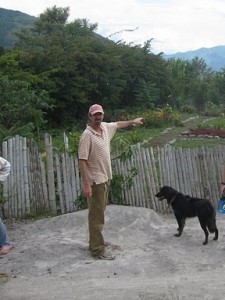Through Ted and I mostly have an open itinerary, we do have a few planned trips thanks to our good friends at Adventures Within Reach (AWR). AWR is a Boulder-based tour operator that we are working with while on our journey. It’s a pretty amazing “job” actually – AWR needs detailed information about different treks, hotels, and operators in some of the areas we are visiting, and we are happy to test, research, and report on them as it allows us access to some amazing adventures that would normally be out of our price range. If you’re thinking about a trip to S. America, Africa, or Nepal, you should check out their website. We’ve really been impressed, as you’ll see below.
Our first such trip arranged with AWR’s assistance was the Salkantay Trek to Machu Picchu with Mountain Lodges of Peru (MLP). The most popular trek to Machu Picchu is the famous “Inca Trail”, but due to its immense popularity, limits have been imposed on daily access (500 people per day – needless to say, the trail is crowded). In reality, there are many Inca trails in the region, and some of these alternative treks provide equally stunning scenery, and a much more private atmosphere. The Salkantay is one of these treks.
We knew ahead of time that the MLP trip would be fancy, but we really had no idea what we were in for. The 8-day trip was the most fantastic that either Ted or I have ever been on. We emailed our parents that we felt like we were on our second honeymoon! Anyone who is considering a trek to Machu Picchu that wants a “comfortable” experience should seriously consider the MLP trip. Hands-down amazing!
As I mentioned above, there are many different hikes that get you to Machu Picchu and most of these involve rather long days of hiking and then camping each night. The other companies usually make the trip in 3-4 days. The MLP trip is different, not only because they spread out the 24 miles of hiking over 6 days, but you get to spend each night in incredible lodges (with hot tubs!), eating beautifully-presented, wonderfully-delicious meals. In addition, the staff and guides provide over-the-top service and think of every last detail to spoil you rotten (why yes, I would love a cool towel and a glass of fresh fruit juice after my long day of hiking).
I’ll let the pictures speak for themselves but a few of the many highlights included:
-Our first view of the Humantay Glacier. There we were walking along on our first day of the trek and then we rounded the corner to see the most beautiful glacier-covered mountain peak.
-The view from the hot tub at the first lodge (with the Salkantay Glacier and Humantay Glacier in the distance).
-The highest we’ve ever been! The pass on our third day of hiking took us over 15,000 feet! Ted and I have done a few 14ers (14,000 foot peaks) in Colorado, but this was certainly our first 15er.
-Wayra Lodge – the second lodge we stayed in our trek. It has to be situated in one of the most beautiful places in the world. And, it’s only accessible by foot – no roads!
-The food. Peruvian food has been impressive nation-wide, but food we had on this trip was truly gourmet. We’ve never taken so many pictures of food in our lives. They were absolutely works of art.
-Our great group. We got to meet fun, unique people that are also in the travel industry. We were also lucky to have amazing guides and be accompanied by two cool MLP office staff members. You spend a LOT of time with your group, and we are certain that they were part of the reason we had so much fun.
-Oh, and by the way, did I mention it culminates at Machu Picchu, the most amazing historic site on the planet! More on this soon!
So if you can’t tell, we absolutely loved the trip and would do it again tomorrow. It was literally the first thing we did upon arriving in Peru and it certainly set the stage for the amazing time we were going to have in this country.
More pictures? Check out the full MLP album here.
